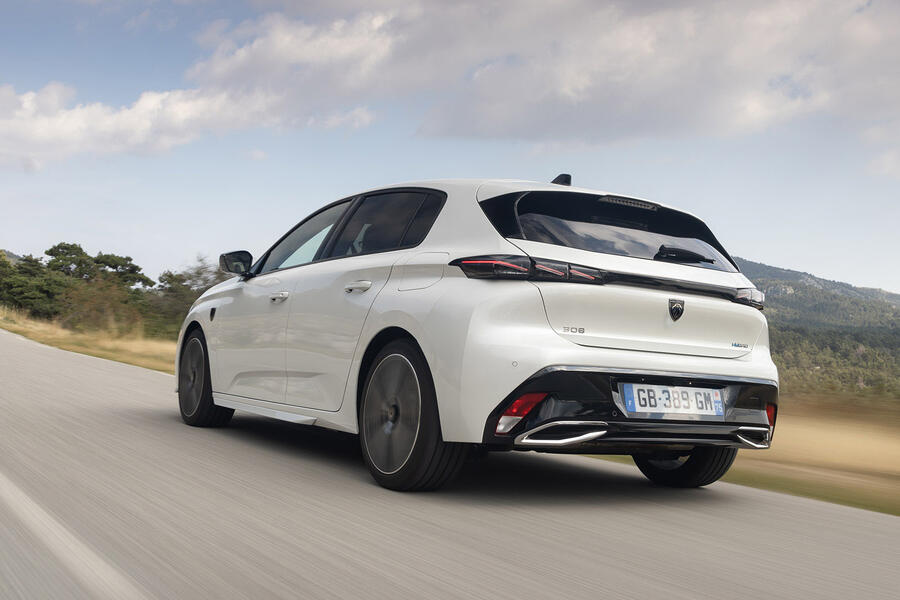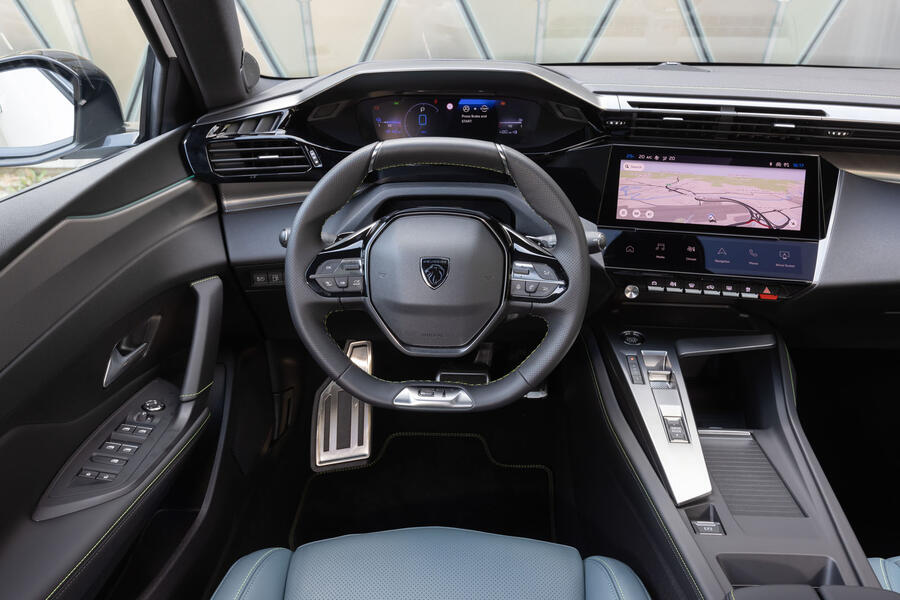What is it?
This early example of the new Peugeot 308 is in the UK but still left-hand drive.
It’s a range-topping plug-in hybrid with 222bhp overall, 178bhp of that coming from a turbocharged 1.6-litre petrol engine and the rest an electric motor, both driving the front wheels through an eight-speed auto gearbox.
There’s a 12.4kWh battery at the back that gives 36 miles of electric-only range. It charges at 3.7kW max, with 7.4kW capability a £300 option. A fully electric 308 will come in 2023, while for now there’s also a 128bhp 1.2-litre turbo petrol and a 128bhp 1.5-litre diesel, plus a 178bhp PHEV.

What's it like?
The new 308 feels plush from the driving seat. It uses good materials and is strikingly designed, with Peugeot’s trademark small and low- set steering wheel, squared off at the top so you can see the dials, which get some swanky 3D elements. I quite like the instruments, but if you have to make the wheel square for them to be seen, maybe don’t put them there?
Ditto some of the infotainment touchscreen elements. To make navigating the system easier, there are several touch-sensitive icons beneath the screen, then an array of buttons beneath that. But it’s possible that adjusting the temperature was at least one click away from visible, which is unforgivable.
A member of the Ford Focus and Volkswagen Golf class, the 308 is a longer car than the model it replaces by 105mm. But despite its longer wheelbase, it isn’t hugely accommodating in the rear, although the boot is generous, at 412 litres.
It’s quite good to drive, though. The ride is agreeably supple but tightly controlled, in a manner not unlike that of the Focus or the Kia Ceed, although more leaden, because of the 1687kg kerb weight (399kg more than the 1.2 Puretech).
The PHEV powertrain is smooth and responsive – and even on low battery charge, the engine drops out pleasingly often in town.
Brake modulation between regeneration and disc use, though, is poor. This could still be tweaked before the car goes on sale in January.

![]()
